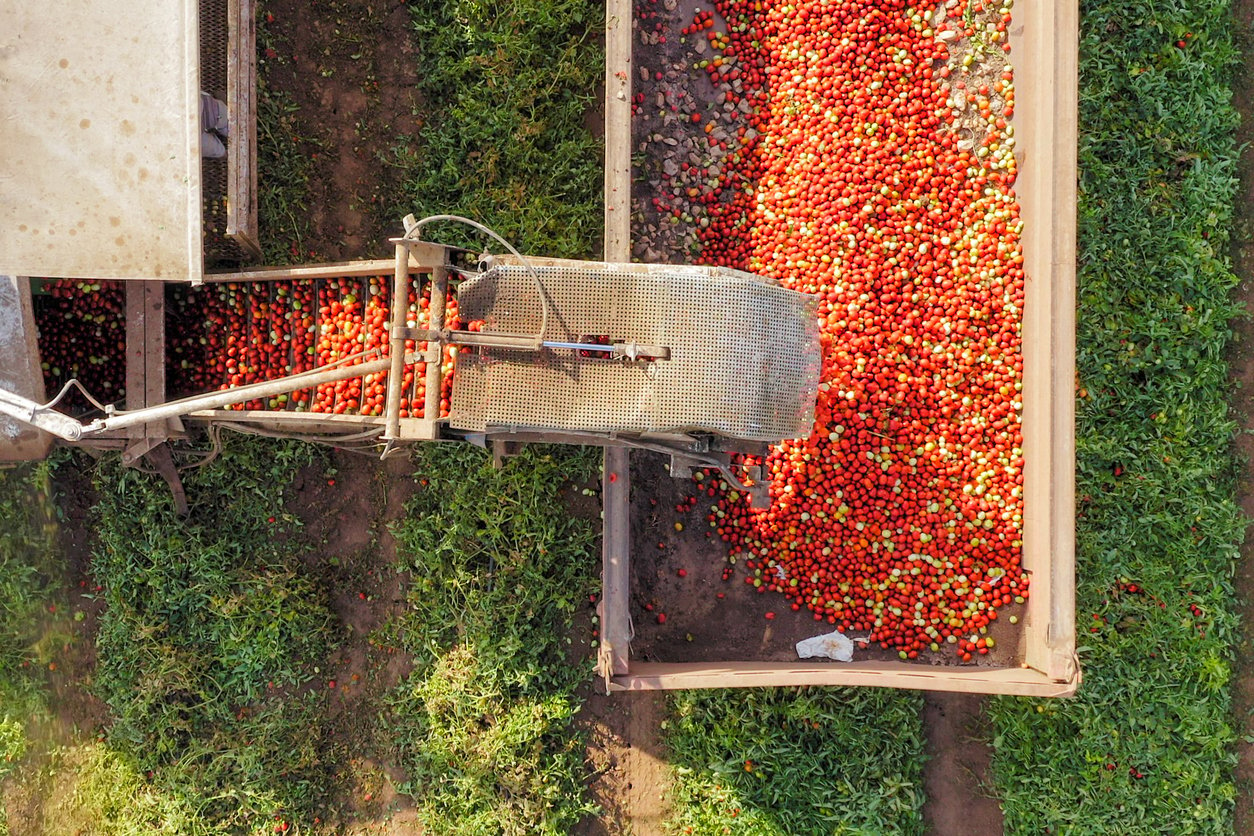“The software is user-friendly, and I like that you can compare the imagery from years past to have a view of how things are improving year-over-year.”
A-Bar Ag is a fourth-generation, family-owned business that farms more than 7,000 acres in the fertile Central Valley of California. This diversified operation raises tomatoes, asparagus, almonds, and pomegranates for processing, taking a hands-on approach that relies on very little outside labor.

Processing tomatoes are a quick-maturing crop with only a 120-day growing season: there’s little margin for error, and irrigation issues can quickly affect the uniformity and quality of the crop.
That’s especially true for A-Bar Ag: with semi-heavy clay loam soil and a high water table on the tomato acreage, the team must consider salinity issues and manage irrigation with precision. “It’s important [that] we aren’t getting the plant too dried out and pulling bad water up from that subsurface water, nor pushing water past the food zone,” explains partner Aaron Barcello.
That said, it’s often tough for the team to know whether they’re striking that balance. Issues like leaks and clogs are almost undetectable in buried drip tape until they’ve caused visible damage to the crop—and once the canopy is established, even that can be easy to miss.
The team at A-Bar-Ag uses aerial data from Ceres Imaging to monitor canopy vigor and water stress in the tomato crop. “When you’re managing a bunch of diversified acres, you can’t possibly get your feet on every acre of ground,” Aaron says. “Imagery from Ceres Imaging gives us some assurance that we’re managing things properly.”
Early in the season—about 40 days after planting—Aaron reviews his imagery to pinpoint stressed areas of the field, which allows him to adjust irrigation scheduling and protect uniformity of the crop.
“[I can] mark up the imagery and share it with my son, brother, or irrigation manager so they can go groundtruth the area and see what’s going on,” Aaron says. “Imagery has helped us find plugged valves and sets with pressure differentials, and to get the most uniformity out of our irrigation system on a real-time basis.”
Aerial data reveals hidden irrigation issues, allowing A-Bar Ag to achieve a more uniform crop.

“Imagery has helped us find plugged valves and sets with pressure differentials, and to get the most uniformity out of our irrigation system on a real-time basis.”